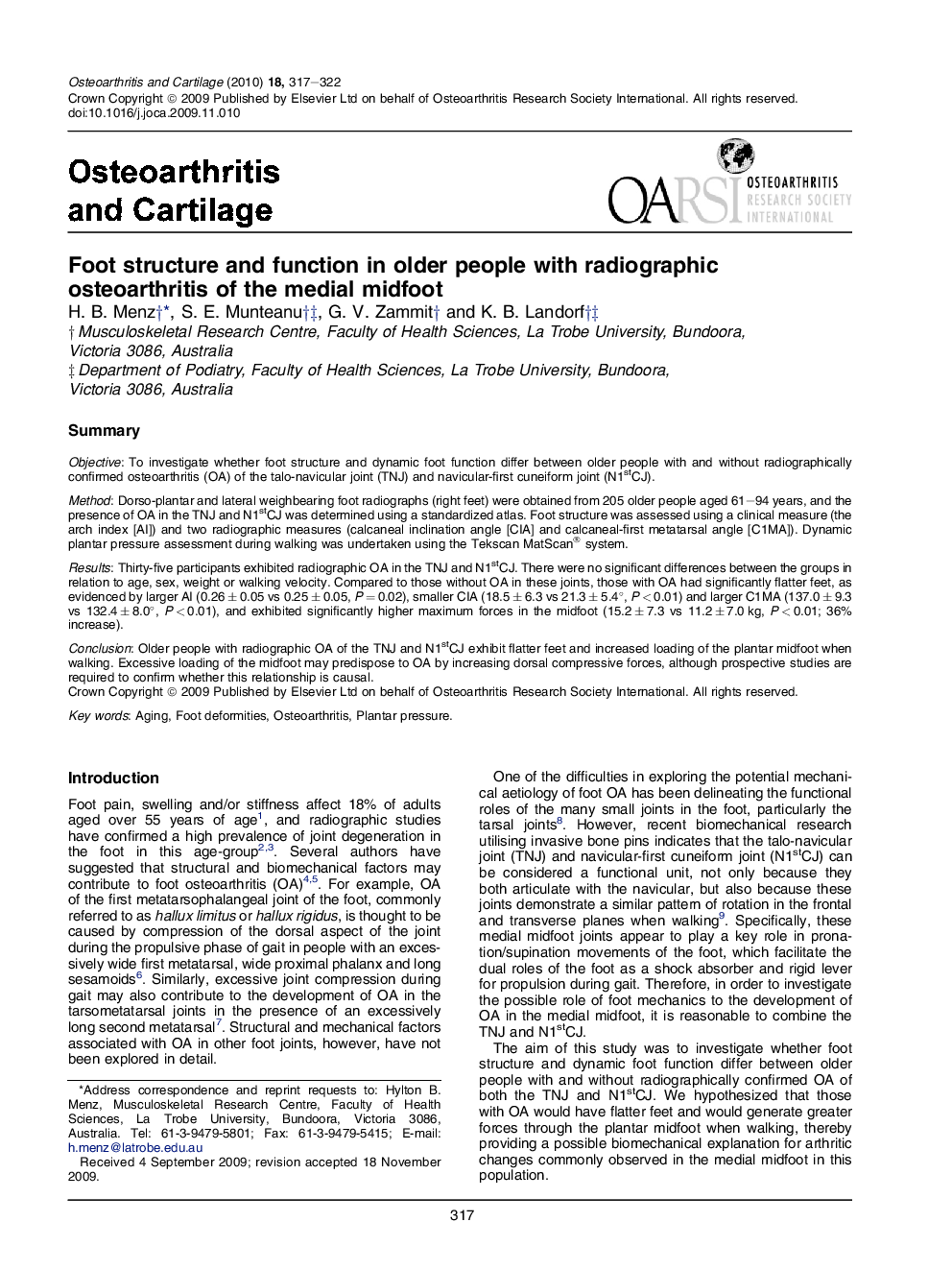| Article ID | Journal | Published Year | Pages | File Type |
|---|---|---|---|---|
| 3381314 | Osteoarthritis and Cartilage | 2010 | 6 Pages |
SummaryObjectiveTo investigate whether foot structure and dynamic foot function differ between older people with and without radiographically confirmed osteoarthritis (OA) of the talo-navicular joint (TNJ) and navicular-first cuneiform joint (N1stCJ).MethodDorso-plantar and lateral weighbearing foot radiographs (right feet) were obtained from 205 older people aged 61–94 years, and the presence of OA in the TNJ and N1stCJ was determined using a standardized atlas. Foot structure was assessed using a clinical measure (the arch index [AI]) and two radiographic measures (calcaneal inclination angle [CIA] and calcaneal-first metatarsal angle [C1MA]). Dynamic plantar pressure assessment during walking was undertaken using the Tekscan MatScan® system.ResultsThirty-five participants exhibited radiographic OA in the TNJ and N1stCJ. There were no significant differences between the groups in relation to age, sex, weight or walking velocity. Compared to those without OA in these joints, those with OA had significantly flatter feet, as evidenced by larger AI (0.26 ± 0.05 vs 0.25 ± 0.05, P = 0.02), smaller CIA (18.5 ± 6.3 vs 21.3 ± 5.4°, P < 0.01) and larger C1MA (137.0 ± 9.3 vs 132.4 ± 8.0°, P < 0.01), and exhibited significantly higher maximum forces in the midfoot (15.2 ± 7.3 vs 11.2 ± 7.0 kg, P < 0.01; 36% increase).ConclusionOlder people with radiographic OA of the TNJ and N1stCJ exhibit flatter feet and increased loading of the plantar midfoot when walking. Excessive loading of the midfoot may predispose to OA by increasing dorsal compressive forces, although prospective studies are required to confirm whether this relationship is causal.
